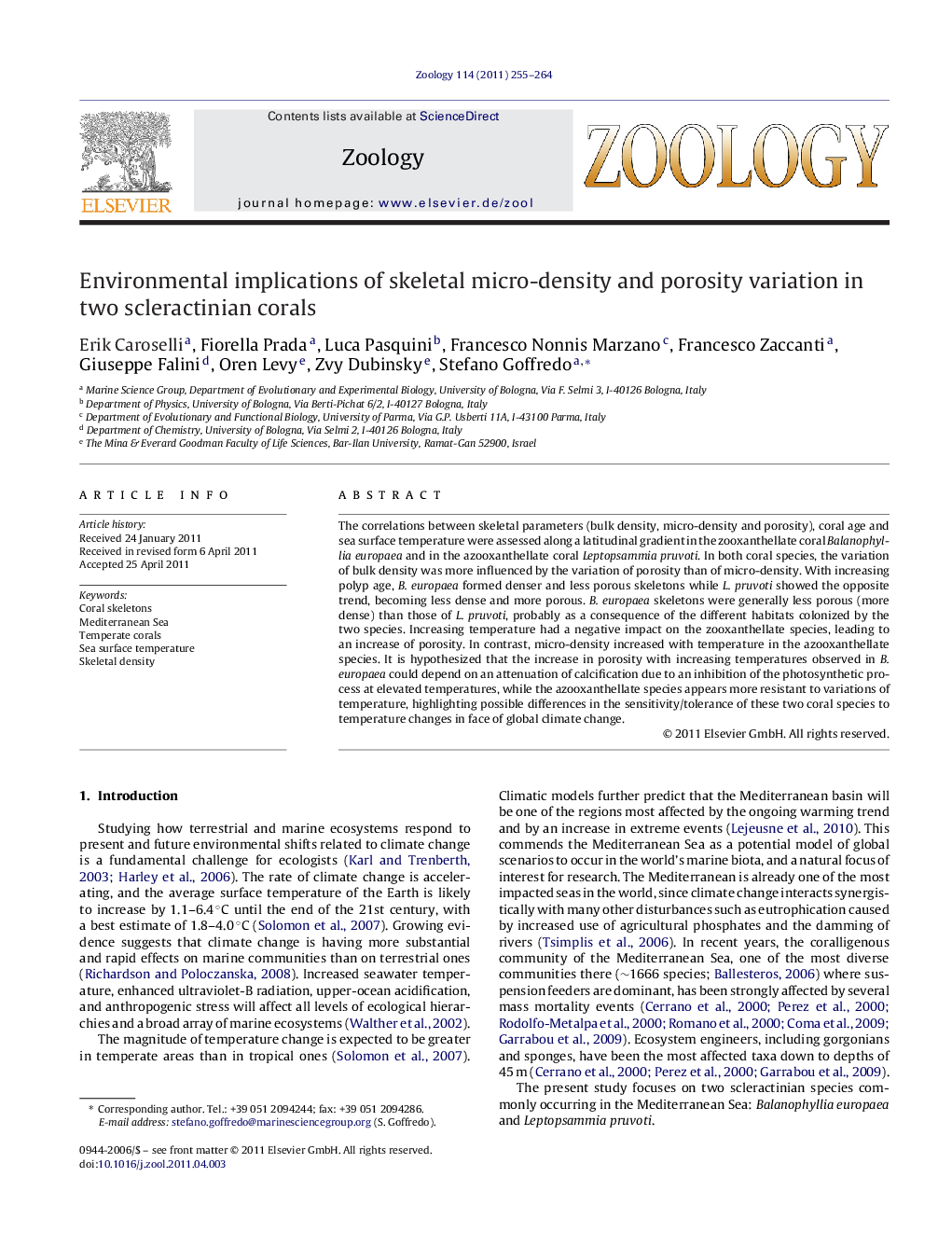| Article ID | Journal | Published Year | Pages | File Type |
|---|---|---|---|---|
| 2791235 | Zoology | 2011 | 10 Pages |
The correlations between skeletal parameters (bulk density, micro-density and porosity), coral age and sea surface temperature were assessed along a latitudinal gradient in the zooxanthellate coral Balanophyllia europaea and in the azooxanthellate coral Leptopsammia pruvoti. In both coral species, the variation of bulk density was more influenced by the variation of porosity than of micro-density. With increasing polyp age, B. europaea formed denser and less porous skeletons while L. pruvoti showed the opposite trend, becoming less dense and more porous. B. europaea skeletons were generally less porous (more dense) than those of L. pruvoti, probably as a consequence of the different habitats colonized by the two species. Increasing temperature had a negative impact on the zooxanthellate species, leading to an increase of porosity. In contrast, micro-density increased with temperature in the azooxanthellate species. It is hypothesized that the increase in porosity with increasing temperatures observed in B. europaea could depend on an attenuation of calcification due to an inhibition of the photosynthetic process at elevated temperatures, while the azooxanthellate species appears more resistant to variations of temperature, highlighting possible differences in the sensitivity/tolerance of these two coral species to temperature changes in face of global climate change.
